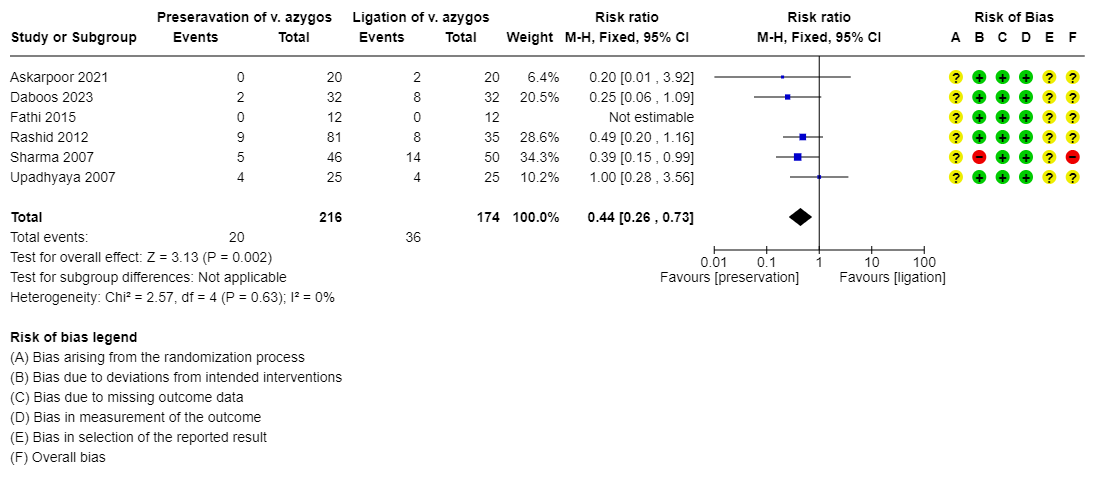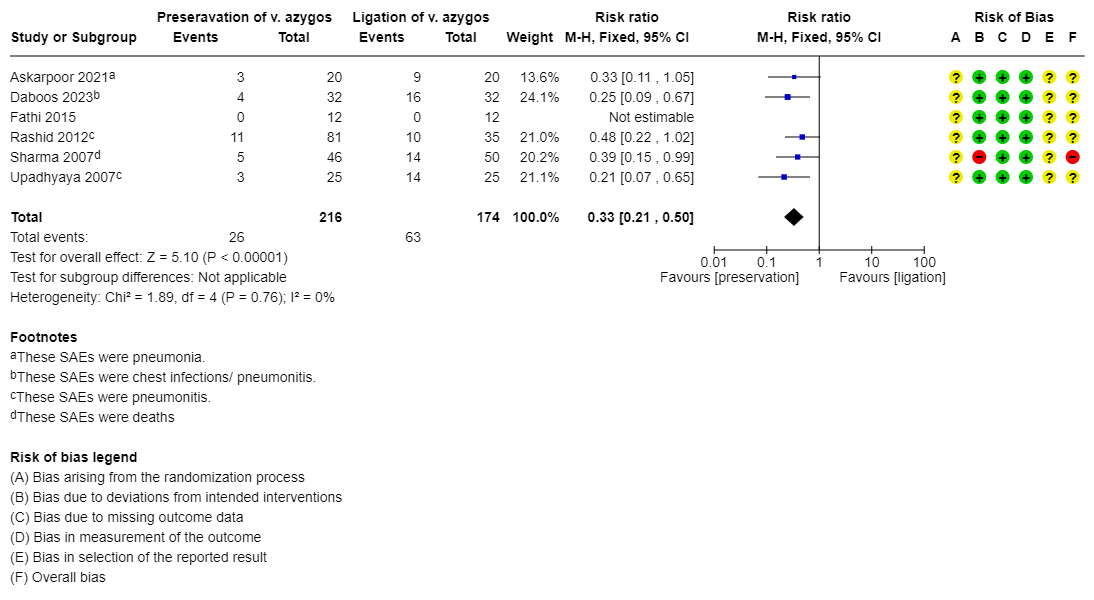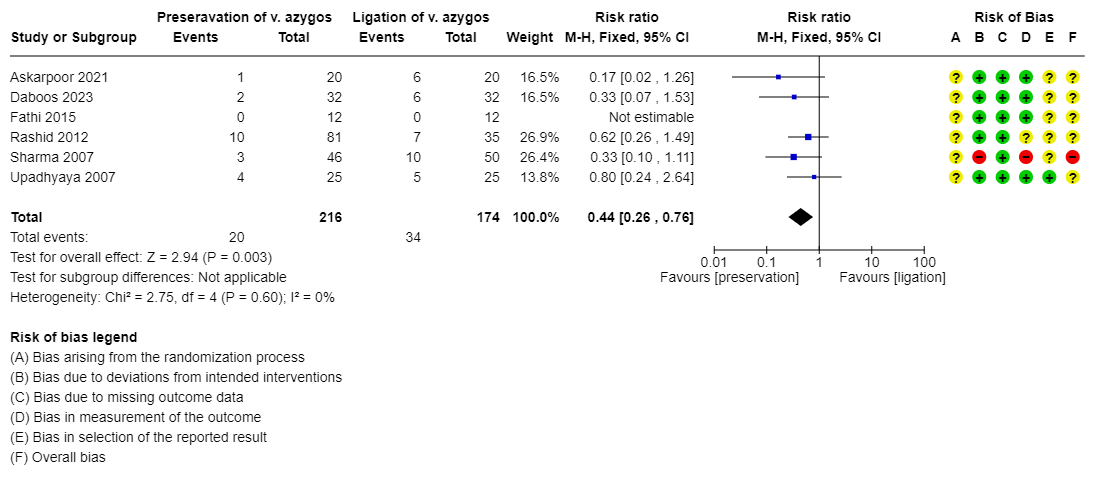Neonatal GI Physiology & NEC 1
Session: Neonatal GI Physiology & NEC 1
718 - Preservation of the azygos vein versus ligation of the azygos vein during primary surgical repair of congenital esophageal atresia
Saturday, April 26, 2025
2:30pm - 4:45pm HST
Publication Number: 718.6110
Steven Kwasi Korang, Children's Hospital Los Angeles, Los angeles, CA, United States; Simone Engmann. Hildorf, Copenhagen University Hospital Rigshospitalet, Copenhagen, Hovedstaden, Denmark; Martin Riis Ladefoged, Copenhagen Trial Unit, Copenhagen, Hovedstaden, Denmark; Jacob oehlenschlæger, rigshospitalet, copenhagen, Hovedstaden, Denmark; Charles J. Smithers, Johns Hopkins All Children's Hospital, St Petersburg, FL, United States; Susanne Poulsen, University hospital of copenhagen, Copenhagen, Hovedstaden, Denmark; Janus Christian Jakobsen, Copenhagen Trial Unit, Copenhagen, Hovedstaden, Denmark; Ulrik Lausten-Thomsen, Department of Neonatology, Copenhagen University Hospital – Rigshospitalet, Copenhagen, Denmark, Copenhagen, Hovedstaden, Denmark

Steven Kwasi Korang, MD. PhD (he/him/his)
Resident
Children's Hospital Los Angeles
Los angeles, California, United States
Presenting Author(s)
Background: Esophageal atresia is one of the most common life-threatening congenital malformations. Treatment is surgical ligation of the fistula if present and esophageal end-to-end anastomosis of the two pouches thereby reconstructing the continuity of the esophagus. During this procedure, one may choose to either ligate or preserve the azygos vein.
Objective: To assess the benefits and harms of preservation of the azygos vein versus ligation of the azygos vein during primary surgical repair of congenital esophageal atresia.
Design/Methods: We identified randomized clinical trials assessing preservation of the azygos vein versus ligation of the azygos vein during primary surgical repair of congenital esophageal atresia in infants less than three months of age. We conducted a search from the Cochrane Gut Group Specialized Register, Cochrane Central Register of Controlled Trials via Ovid Evidence-Based Medicine Reviews Database, MEDLINE, Embase, CINAHL, ClinicalTrials.gov, LILACSS, Science Citation Index Expanded and Conference Proceedings Citation Index – Science, and the WHO International Clinical Trials Registry Platform. We searched all databases from their inception to May 2024.
Results: Six trials met the inclusion criteria including 390 participants in total.
Meta-analyses of our primary outcomes showed that preservation of the azygos vein may result in a large reduction of mortality (RR 0.44, 95% CI 0.26 to 0.73; low certainty), serious adverse events (RR 0.33, 95% CI 0.21 to 0.50;very low certainty) and anastomosis leakage (RR 0.44, 95% CI 0.26 to 0.76; low certainty) when compared to ligation of the azygos vein for neonates undergoing primary surgical repair of congenital esophageal atresia. Meta-analysis of our secondary outcomes showed that preservation of the azygos vein may result in a large reduction of mediastinitis or sepsis (RR 0.34, 95% CI 0.21 to 0.53; very low certainty), whereas the effects on esophageal stricture were unclear (RR 0.75, 96% CI 0.35 to 1.63; very low certainty).
Conclusion(s): Current evidence suggest that preserving the azygos vein during primary surgical repair for esophageal atresia may result in larger reductions of overall mortality, serious adverse events, anastomosis leakage, and sepsis or mediastinitis. No included data suggested that routine ligation of the azygos vein was beneficial. However the evidence was of low to very low uncertainty.
Figure 1
 Meta-analysis assessing mortality for preservation versus ligation of the azygos vein during surgical repair of congenital esophageal atresia
Meta-analysis assessing mortality for preservation versus ligation of the azygos vein during surgical repair of congenital esophageal atresia Figure 2
 Meta-analysis assessing serious adverse events for preservation versus ligation of the azygos vein during surgical repair of congenital esophageal atresia
Meta-analysis assessing serious adverse events for preservation versus ligation of the azygos vein during surgical repair of congenital esophageal atresia Figure 3
 Meta-analysis assessing anastomosis leakage for preservation versus ligation of the azygos vein during surgical repair of congenital esophageal atresia
Meta-analysis assessing anastomosis leakage for preservation versus ligation of the azygos vein during surgical repair of congenital esophageal atresia Figure 1
 Meta-analysis assessing mortality for preservation versus ligation of the azygos vein during surgical repair of congenital esophageal atresia
Meta-analysis assessing mortality for preservation versus ligation of the azygos vein during surgical repair of congenital esophageal atresia Figure 2
 Meta-analysis assessing serious adverse events for preservation versus ligation of the azygos vein during surgical repair of congenital esophageal atresia
Meta-analysis assessing serious adverse events for preservation versus ligation of the azygos vein during surgical repair of congenital esophageal atresia Figure 3
 Meta-analysis assessing anastomosis leakage for preservation versus ligation of the azygos vein during surgical repair of congenital esophageal atresia
Meta-analysis assessing anastomosis leakage for preservation versus ligation of the azygos vein during surgical repair of congenital esophageal atresia 
